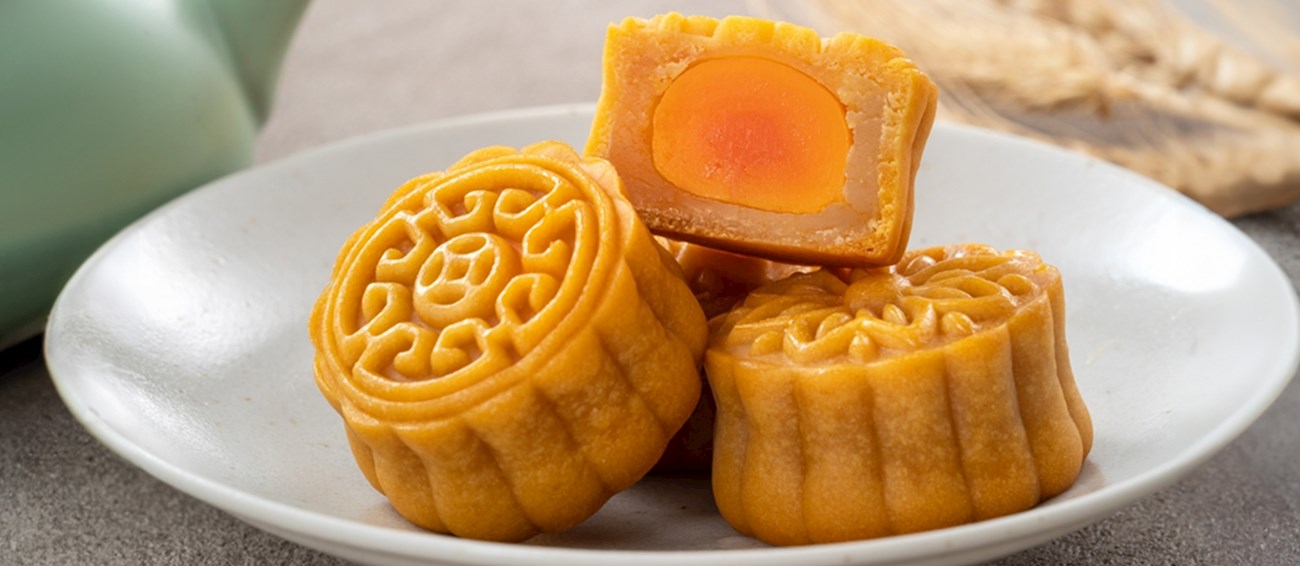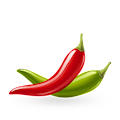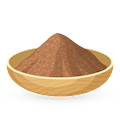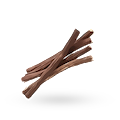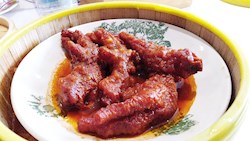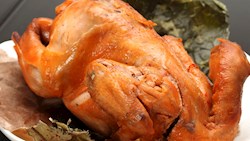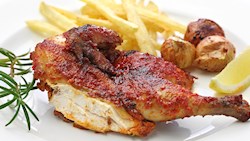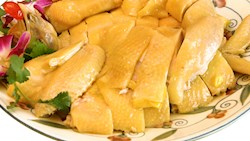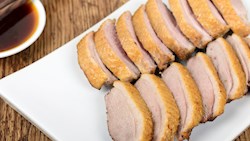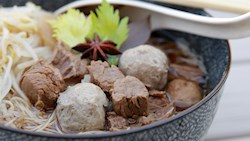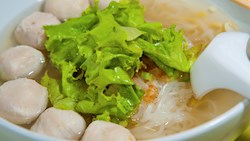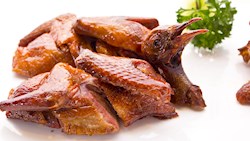Duck's head is a spicy local specialty from the Chinese city of Wuhan, but it is also a snack that is commonly eaten throughout China, most notably in Shanghai. The dish is made by stir-frying a head of duck with the addition of herbs and spices.
Duck's head has a crispy taste as a result of the stir-frying method, and it is claimed to be a healthy food, with one of the duck's head store owners claiming that it helps one's brain power when consumed. Some say that the taste of the dish is not unlike eating a spicy chicken wing, while the others, such as Kellie Schmitt of CNN, describe it as one of Shanghai's weirdest foods.
When the head is served, it should be pried open with one's fingers to get to the tender meat on the interior.
MAIN INGREDIENTS
Cantonese mooncakes are a type of traditional Chinese pastry that is notably enjoyed during the Mid-Autumn Festival, which is a significant festival in many Asian countries. These mooncakes are distinctive with their tender, thin, and slightly browned crust and are usually filled with sweet, dense fillings.
The most common filling in Cantonese mooncakes is lotus seed paste, which is smooth and sweet, and usually contains salted egg yolks, representing the full moon and offering a savory contrast to the sweet filling. Another distinctive feature is their appearance: the top of the mooncake is typically embossed with Chinese characters indicating the type of filling, the name of the bakery, and additional decorative motifs.
OTHER VARIATIONS OF Yuebing
In its original form, guilinggao was a herbal paste that consisted of the powdered plastron (bottom shell of Golden coin turtle) and a variety of flowers, herbs, spices, roots, and tree barks. Although it was initially used as a health remedy, modern variations are mainly enjoyed as a well-chilled, refreshing jelly dessert.
Since the Golden coin turtle is critically endangered, the original paste is nowadays rarely found and usually comes with a hefty price tag. Many producers opt to use other turtle species, and guilinggao nowadays usually appears as a canned version, or as a powder mix that is easily made into jelly.
OTHER VARIATIONS OF Tong sui
Cantonese in origin, moo goo gai pan is an Americanized version of a pre-existing Chinese stir-fry made with mushrooms and sliced chicken as the main ingredients. Additional ingredients typically include snow peas, bamboo shoots, water chestnuts, and bok choy, all doused in a simple white sauce made with chicken broth and seasoned with soy sauce, oyster sauce, and sometimes Shaoxing wine.
In contrast to the original Chinese version of the dish, moo goo gai pan has a thicker sauce that's more seasoned and incorporates a wider range of ingredients. In the United States, this simple stir-fry is served over steamed rice and is one of the most popular take-out foods.
Duck blood and vermicelli soup is a traditional delicacy made by cooking vermicelli, duck liver, blood, and intestines with dried tofu, dried shrimp, ginger, sesame oil, and caraway seeds. Although the dish is consumed in many Chinese regions, it is a specialty of Nanjing, famous throughout the world for its duck dishes, which is why it is sometimes referred to as the capital of duck.
According to a popular story, a poor man in Nanjing had killed a duck and used a bowl to hold its blood. While cleaning the duck, he accidentally dropped some vermicelli into the bowl and cooked the stew afterwards. When he tasted the stew, he found it quite flavorful, and a wealthy man heard about the newly created dish, thus employing the poor man as a cook for his family.
MAIN INGREDIENTS
Cocktail bun is a simple sweet bun originating from Hong Kong and dating back to the 1950s. It was created from unsold, but edible buns that were ground with coconut and sugar and used as a filling for the new buns called cocktail buns. The name refers to a mix of ingredients that were similar to an exotic mixture of liquors.
Nowadays, the filling is usually enriched with butter or margarine. These buns can be found in most local bakeries, and they're usually finished with egg wash and a sprinkle of sesame seeds on top before baking.
Shark fin soup is a controversial soup with Chinese origins, made with shark fins and flavored with chicken or another type of stock. Shark fin is slightly neutral in flavor, and is used in the dish to add texture. It is believed that the first shark fin soup was invented by an emperor during the time of the Sung Dynasty who wanted to show off his power, wealth, and generosity to his guests.
Because of that, preparing and serving this expensive dish is now considered a sign of respect. Today, the soup is a part of the Big 4, dishes that represent health and prosperity in Chinese culture, which are usually reserved for special occasions, the other three being abalone, sea cucumber, and fish maw.
MAIN INGREDIENTS
This popular Hangzhou dish with a sweet and sour flavor is traditionally made with cleaned grass carp that is poached or steamed with ginger, then covered with a sauce consisting of black vinegar, brown sugar, soy sauce, corn flour, water, and stock.
When served, the fish is usually topped with sesame oil and finely chopped spring onions. Some sources date West Lake vinegar fish to the Southern Song Dynasty (1127-1279), when it was supposedly prepared by a woman named Sister Song in her restaurant near the West Lake.
MAIN INGREDIENTS
Mandarin roll is a steamed bun with Chinese origins, consisting of wheat flour, sugar, water, vegetable oil, yeast, and salt. It is such an important part of Chinese cuisine that it is likened to white bread in western cuisine. Steamed Mandarin rolls are sometimes accompanied by sweetened condensed milk, while in the southern parts of the country the rolls are often sweet and can be eaten on their own.
Sometimes, the rolls are salted and filled with finely chopped spring onions on the interior. What makes these rolls unique is their unusual shape, reminiscent of flower blossoms, which is the reason for their alternative name - flower rolls.
MAIN INGREDIENTS
Maltose crackers are traditional snacks originating from Hong Kong. They were at the peak of popularity in the 1950s and 1960s, when maltose crackers were sold from street vendors. These snacks consist of only two ingredients – maltose syrup and saltine crackers.
In order to prepare maltose crackers, maltose syrup is sandwiched between two saltine crackers. Bamboo sticks are often pressed into the maltose so that the snack looks like a cracker lollipop. These inexpensive snacks are especially popular among children.
TasteAtlas food rankings are based on the ratings of the TasteAtlas audience, with a series of mechanisms that recognize real users and that ignore bot, nationalist or local patriotic ratings, and give additional value to the ratings of users that the system recognizes as knowledgeable. For the “66 Worst Rated Chinese Foods” list until April 20, 2025, 13,073 ratings were recorded, of which 11,272 were recognized by the system as legitimate. TasteAtlas Rankings should not be seen as the final global conclusion about food. Their purpose is to promote excellent local foods, instill pride in traditional dishes, and arouse curiosity about dishes you haven’t tried.
